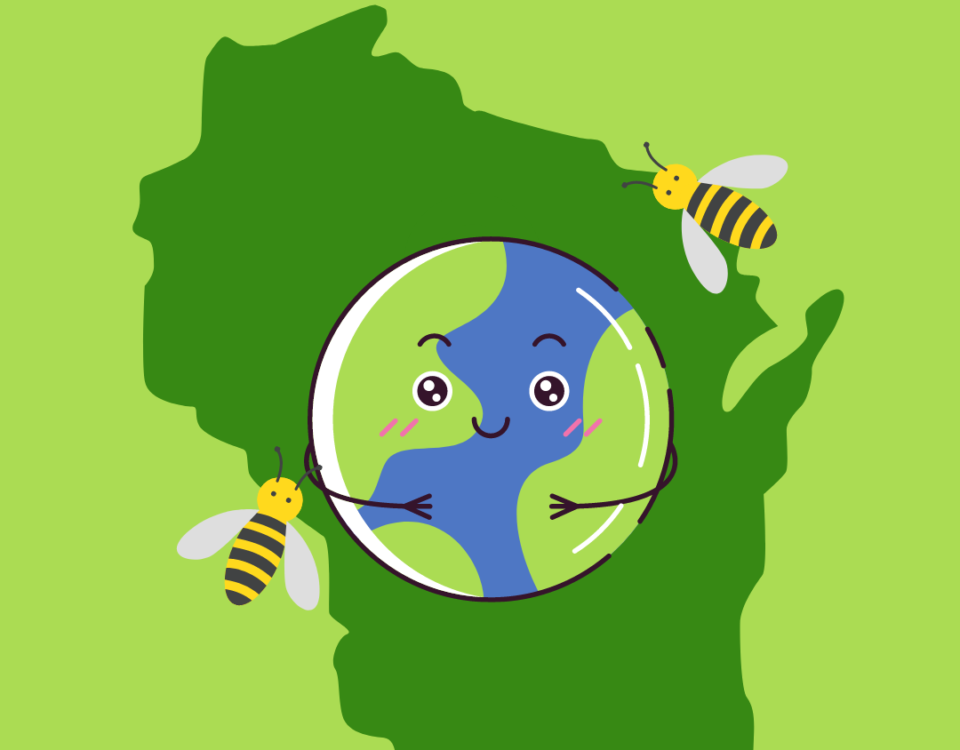- All-In-One Beekeeping for the Bees
- +1-608-728-8233
- info@beepods.com
Finally, a Winner: This Is the Best Honey Out There

Nine tubes of honey, waiting to be tasted

Nine tubes of honey, waiting to be tasted
Bees Work Hard to Make Honey
Honey is a magical substance. Do you ever stop to think about how we have access to this sticky-sweet substance? A small yellow and black striped insect drinks nectar from flowers using their proboscis (tongue). Then, they store it in their honey stomach and when they travel back to the hive, they regurgitate it up. In the process, it mixes with invertase, an enzyme, which helps break down part of the sugar.
Next, the bee regurgitates this sweet mixture into a cell in the hive. Finally, worker bees gather round to fan the cell with their wings, which helps evaporate moisture, effectively concentrating the nectar into the substance we know and love.
It’s quite the process! And a lot of work on the bees’ end.
Ambrosia. Nectar of the gods.

Look at this sweet, sweet set
I can’t imagine a world without honey. I’ve used it since I was a kid, stirring a spoonful into a mug of herbal spiced tea and taking it with me to school during chilly, winter days. But, I didn’t truly appreciate how dynamic it is until I started learning more about honey bees.
Clearly, I had no idea how many different varieties there are out there. Honestly, it’s endless since any given bee travels to an array of flowers (honey bees are foraging generalists) and the resulting flavor cannot be replicated. For example, if you have a hive, you may notice every year’s harvest tastes a little different from the last.
Additionally, the native flora varies from state to state and even across the globe, which ultimately results in a wide range of flavor profiles available for us to consume. In Nepal, you can find hallucinogenic honey, for example. I have no interest in hallucinogenic sweeteners, but, there are a few notable varieties I’ve always wanted to try (sage, for example). Basically, I wanted to see how they all stack up against each other. Are all honey varieties created equal?
A Honey Taste Test
So, in an effort to show the utmost respect for Apis mellifera through a celebration of the fruits of their labor, I decided to do a honey taste test and share the results with you. I found a sampler of honey varieties that was the answer to my desires and eagerly awaited its arrival. Then, I thought about my ground rules to determine the best honey out there.
The rules:
- Each tube of honey came with a description card with characteristics. I’m not reading these ahead of time and will use my own palate to guide my experience.
- I will taste the honey by itself, not on or with any other food product.
- In between varieties, I will cleanse my palate with lemon water.
- I will evaluate based on aroma, flavor, mouthfeel, and crystallization.
- Each sample will receive an overall rating from 0-10.
The honey varieties I’ve included are wild raspberry, blueberry, sourwood, buckwheat, wild black sage, Tupelo, sweet yellow clover, maple blossom, and basswood.
In the end, there will be a honey variety that receives top marks, but the real winner here is me because I get to taste a bunch of different honey varieties, some not readily available in my part of the country. Fortunately, you can join me in the winner’s circle since we all get to reap the saccharine benefits of the hard work of bees.
Now follow along and discover the best honey available in the United States.

Here’s a hint: This tube holds the winner!
Wild Raspberry
Origin: Maine
Color: Light amber
Aroma: Strong, sweet, like raisins dried in the sun
Flavor: Slight bite, juicy, nectarines, cocoa butter
Mouthfeel: Melts quickly, light-bodied
Crystallization: Large crystals woven throughout
Rating: 4, the flavor is okay, but this honey doesn’t taste special
Blueberry
Origin: Maine
Color: Light amber
Aroma: Mild, fleeting flowers on the wind
Flavor: Faintly of oatmeal, brown sugar, blueberry skin
Mouthfeel: Thick, crunchy, warm
Crystallization: Heavy
Rating: 6, tastes familiar and satisfying
Sourwood
Origin: North Carolina
Color: Light amber with faint peach tones
Aroma: Astringent, earthy, faintly medicinal like eucalyptus
Flavor: Buttery, rich, like caramel
Mouthfeel: Creamy
Crystallization: None
Rating: 9, outstanding, rich flavor like caramel sauce

Viscous and delicious
Buckwheat
Origin: Washington
Color: Deep mahogany
Aroma: Molasses, hojicha tea, dark roast coffee
Viscosity: Medium, lingers on the palate
Flavor: Molasses, spice
Mouthfeel: Unexpectedly light-bodied
Crystallization: Fleeting, minuscule
Rating: 3, acrid aftertaste, like overroasted coffee
Wild Black Sage
Origin: California
Color: Light amber
Aroma: Sour lemon, honeysuckle
Flavor: Gentle upfront, mouthwatering, savory
Mouthfeel: Slow to dissolve
Crystallization: Heavy, coarse granules
Rating: 5, surprisingly savory
Tupelo
Origin: Georgia
Color: Light amber
Aroma: Curious, floral, subtle spice
Flavor: Sweet, buttery, smooth, notes of pear
Mouthfeel: Almost tingly, coats the tongue and lingers
Crystallization: None
Rating: 8, sweet, delicious, with fruit and floral notes

Honey is perfect, eaten off a spoon
Sweet Yellow Clover
Origin: Colorado
Color: Daffodil yellow
Aroma: Floral, nutmeg, cardamom
Flavor: Sun tea, cinnamon
Mouthfeel: Crystals slow to dissipate, but with a soft crunch
Crystallization: Medium-sized, 60% distribution
Rating: 7, distinct, spicy, tea-like
Maple Blossom
Origin: Oregon
Color: Dark amber
Aroma: A walk in the forest, marzipan
Flavor: Maple up front and carried through the whole tasting experience, bubblegum top note
Mouthfeel: Melts quickly, maple sweetness reverberates on the side of the palate
Crystallization: Heavy, but with gentle granules
Rating: 7, strongly of maple
Basswood
Origin: New York
Color: Amber
Aroma: Earthy, floral, overripe fruit
Flavor: Rosewater, salt
Mouthfeel: Sticks to the back of the palate
Crystallization: Medium-sized, 60% distribution
Rating: 4, flavors are fleeting and disparate
After all your reading, we have a winner: sourwood honey from North Carolina! The other honey varieties of note are Tupelo honey, sweet yellow clover honey, and maple blossom honey. I highly recommend all of these varieties as they have complex, interesting flavor profiles and would pair beautifully with all sorts of fruits, pastries, and cheeses. Every one of the honey varieties I tested is worth a taste, but some become less memorable when compared to the best honey above.
Final Thoughts
Let’s take a moment to appreciate how we get to enjoy honey stirred, mixed, baked, or slathered onto some of our favorite foods. We can even enjoy it plain on a spoon. We can pay our respects to the honey bees who make it all possible for us, to provide us with such a tasty, versatile substance.
If you’re interested in literally paying your respects, check out the great organizations (below) who do amazing work for pollinators.
Moreover, if you want to be more active in showing your respects, plant some flowers for your local bees. Not sure where to start? We have a garden course coming out for that!
Resources:
https://centerforhoneybeeresearch.org/hive-monitoring/
Caitlin Knudsen
Latest posts by Caitlin Knudsen (see all)
- How to Change Your Students’ Lives With Project-Based Learning - November 20, 2020
- Watch The Pollinators to See How We Can All Choose to Change Agriculture - November 13, 2020
- 6 Cold Weather Feeding Tips You Have to Know - November 6, 2020



